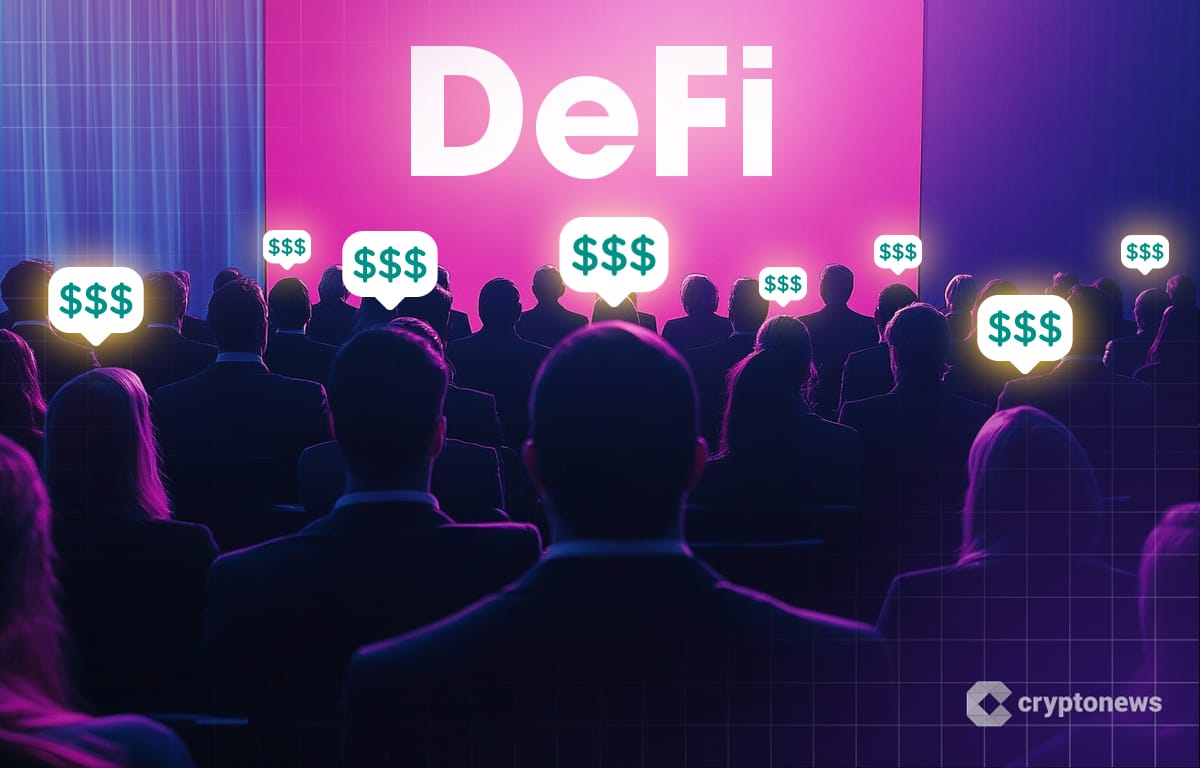Could DeFi Be the Next Gold Rush for Institutions in 2025?

Key Takeaways:
DeFi will go mainstream on the wings of a crypto-friendly U.S. government, experts say. Protocols that are most likely to attract institutional investments will be those addressing real user needs and showing proven security. But issues of regular exploits and other smart contract vulnerabilities remain a big concern in the sector.Cryptocurrency is at a pivotal moment, at once targeted by hostile regulators and bullish about the ease of doing business under Donald Trump’s incoming administration. This is especially true of decentralized finance (DeFi).
Industry insiders are not too worried about the Internal Revenue Service’s rules—due to take effect in January 2025—that could ban DeFi protocols in the U.S.
They believe the new rules are “the last gasp of a dying horse.” Trump’s team and the most pro-crypto Congress ever will scrap “anti-innovation regulation,” according to five analysts who spoke to Cryptonews.
Sasha Ivanov, founder of Waves and the cross-chain ecosystem Units Network, noted that inflationary concerns and the need to hedge against weakening fiat currencies drive institutional interest in crypto. Speaking to Cryptonews, Ivanov said:
“The understanding that crypto represents a new form of money is gradually gaining traction among institutional investors. While DeFi may not currently be their primary focus, it is undoubtedly poised to become the next big opportunity for them.”
Experts say that DeFi could go mainstream in 2025, aided by a government supportive of crypto. Ironically, this pro-crypto administration is also anti-establishment. Trump’s plans massive cuts in government spending to tackle debt and inflation while championing crypto.
DeFi’s current challenges may be hiding what could become the biggest year for the sector. Institutional interest in crypto is high. And while Bitcoin paved the way with spot ETFs, the spotlight is shifting toward DeFi, where the promise of high returns is drawing significant attention.
Quick wins for the sector in 2025 would include pro-crypto legislation, regulatory clarity, and massive corporate buy-in. Some experts believe that the real risk factor for DeFi has been hostile federal agencies, not the sector itself. With a pro-crypto administration in the White House, the stage could be set for enthusiastic newcomers.
2025 DeFi Performance Outlook
Analysts picked different fundamentals to favor the DeFi protocols that are likely to fly high in 2025. Ivanov is tipping established and well-audited protocols such as Curve, Aave, and DAI to attract the most attention from institutional investors.
For Anish Mohammed, the co-founder of DeFi protocol Panther, it will be platforms emphasizing scalability, interoperability and privacy. The key is to onboard businesses to systems that equally guarantee security and transparency, Mohammed told Cryptonews, stating:
“Layer 2 solutions, zero-knowledge proof (ZKP) technologies, and decentralized identity systems will be key enablers of institutional participation.”
Tim Zinin, an educator and co-founder of crypto school Botanica, favors projects in the Telegram-backed TON ecosystem to stand out.
“Infrastructure, scalability, and innovation in the TON network will most likely find a sweet spot with institutions seeking the next frontier in DeFi,” Zinin said in an interview with Cryptonews.
According to Forest Bai, the co-founder of Web3 venture capital firm Foresight Ventures, DeFi protocols most likely to attract institutional investments will be those addressing real user needs, showing proven security, and leadership within their core ecosystems.
It includes core decentralized finance projects such as Uniswap (UNI), the dominant DEX in the Ethereum ecosystem, and Aave, a top lending protocol on Ethereum. Bai also spoke about Chainlink as a “leading decentralized oracle,” telling Cryptonews:
“As the industry standard for reliable data feeds, Chainlink underpins almost all DeFi protocols as critical infrastructure.”
Drivers of Institutional Interest
Institutional interest in DeFi marks a natural stage in the evolution of crypto. According to Mohammed, “While Bitcoin introduced the concept of digital scarcity, DeFi unlocks value through yield generation, decentralized governance, and programmable money.”
Analysts say that in 2025, institutions will jostle for the front seat in the decentralized finance supercycle. Companies will position themselves for “outsized returns” and the opportunity to diversify. Mohammed said:
“As infrastructure matures and regulatory clarity improves, DeFi will complement traditional investments by providing unparalleled access to liquidity, yield opportunities, and innovative financial products.”
Bai attributes the coming surge of institutional interest in decentralized finance to compliance, high yields, and ease of interaction.
“Regulatory clarity is steadily improving, with compliance-focused services like KYC and AML now embedded in DeFi protocols, creating a safer and more legally viable environment for institutional engagement,” said Bai, adding:
“DeFi’s potential for high yields, particularly through mechanisms like yield farming and staking, far surpasses what traditional markets can offer – especially in a low-rate or rate-cut environment. These returns are becoming increasingly attractive to institutions seeking a higher return on investment in a diversifying portfolio.”
Experts point to technology as the key driver of DeFi’s marked improvements. Protocols now offer better scalability, enhanced liquidity, and user-friendly interfaces, they say.
According to Bai, the changes lower the technological barriers for institutions. In addition, the growing convergence between traditional finance and DeFi makes it possible for corporates to bring old practices aboard.
Michael Cunningham, head of digital assets at blockchain infrastructure platform io.finnet, concurred.
“Outside of gambling on meme coins, DeFi products offer drastically improved efficiency for traditional financial products and novel distribution channels with lower barriers to entry than what individuals or companies face with traditional options,” he told Cryptonews.
Regulation – A New ‘Trump Card’
Cunningham, whose company has clocked over $20 billion in transaction volume working with 40 institutions, said decentralized finance products like cross-border remittances and microfinance offer a means for firms to spread their global footprint.
He also noted that the sector has significantly derisked with time, saying:
“An entire ecosystem of products has emerged and matured to help facilitate this interaction between DeFi markets and TradFi, ranging from advanced wallet infrastructure (such as multi-party computation-enabled self-custody solutions for institutions) to risk analysis products to ensure all transactions are safe and compliant.”
With a record $245 million in political spending, the crypto industry helped elect 271 pro-crypto candidates, compared to just 122 anti-crypto ones. Trump’s win was the cherry on top, with “crypto bros” also making gains in the Senate.
Previous administrations left the business of overseeing crypto to the regulators, who many saw as heavy-handed and, at times, unconstitutional. But now, with the most pro-crypto Congress in history, those regulators are likely to overrule them.
While Trump has only only spoken about the SEC Chair, the impending replacement of long-time crypto foe Gary Gensler may have a chilling effect on other agencies.
His Department of Government Efficiency (DOGE) may also increase pressure on embattled federal agencies.
According to analysts, the combined effect might be near-consensus in terms of crypto regulation in general and DeFi in particular. As an outcome, the U.S. may achieve regulatory clarity where opacity and indeterminacy previously kept institutions at bay.
“Institutional investors are very much influenced by the local regulatory landscape,” said Botanica Crypto School’s Zinin.
“The real challenge is not in DeFi, but how fast lawmakers are going to be able to build an objectively positive environment for such investments.”
Zinin gave the example of El Salvador, which he claims to have “turned from being one of the most dangerous places on Earth to becoming the safest country in the Americas…due to its pro-crypto legislation.”
He added:
“It means the message is whoever sets the right regulatory tone first wins in this institutional game.”
Tech-Based Risk: DeFi vs. Bitcoin
Bai, the Forest Ventures co-founder, said smart contract vulnerabilities remain a pressing concern in DeFi, as bugs can lead to huge losses.
The reliance on algorithmic mechanisms instead of intermediaries is also a source of risks that outweigh Bitcoin’s peer-to-peer model, he says.
Bai thinks DeFi platforms can eliminate these fears by focusing on risk management strategies such as audited protocols, trusted custodians, and spreading investments across platforms.
Cunningham believes that compared to older instruments like Bitcoin, decentralized finance poses unique risks, such as liquidity risk and regulatory uncertainty.
“While Bitcoin is relatively straightforward as a digital asset, DeFi involves complex protocols that can be susceptible to coding flaws or exploits,” he said, adding:
“Robust technological solutions that prioritize security, such as multi-party computation to safeguard the underlying private keys securing an institution’s assets as well as a comprehensive transaction screening service to ensure transaction integrity are considered best practice- solutions that were generally unavailable to institutions when interacting with DeFi four years ago.”
In the next few years, Cunningham expects decentralized finance to evolve as a “trusted” layer for financial services, with protocols addressing current gaps in compliance, security, and scalability.
“The next wave of adoption will involve a deeper integration of DeFi into institutional portfolios, leveraging it for tokenized assets, 24/7 settlements, and enhanced financial transparency,” he told Cryptonews.
“DeFi will become an intrinsic part of institutional strategies, offering unparalleled opportunities to diversify and generate yields,” he added.
The post Could DeFi Be the Next Gold Rush for Institutions in 2025? appeared first on Cryptonews.



